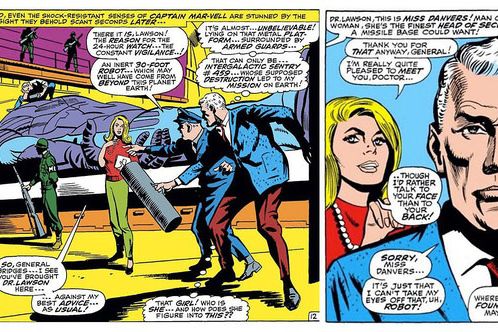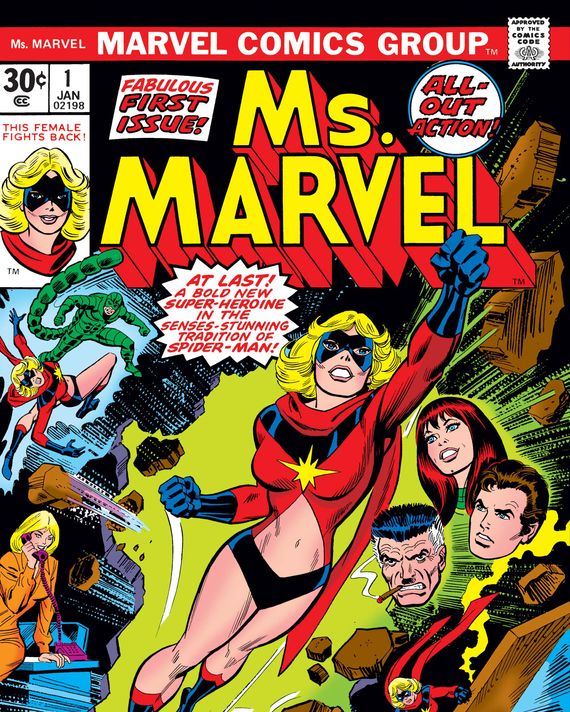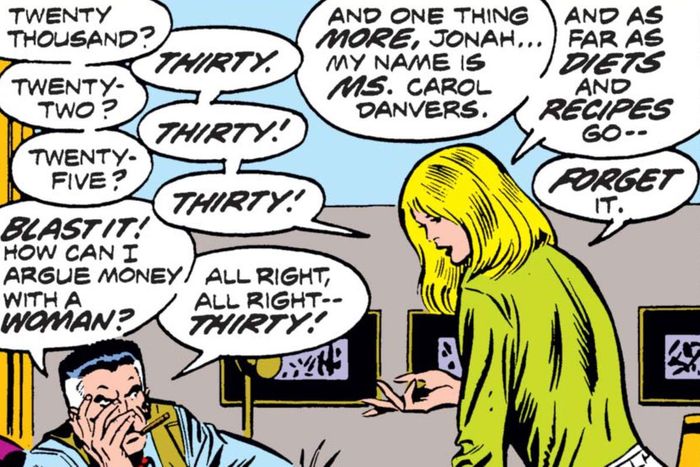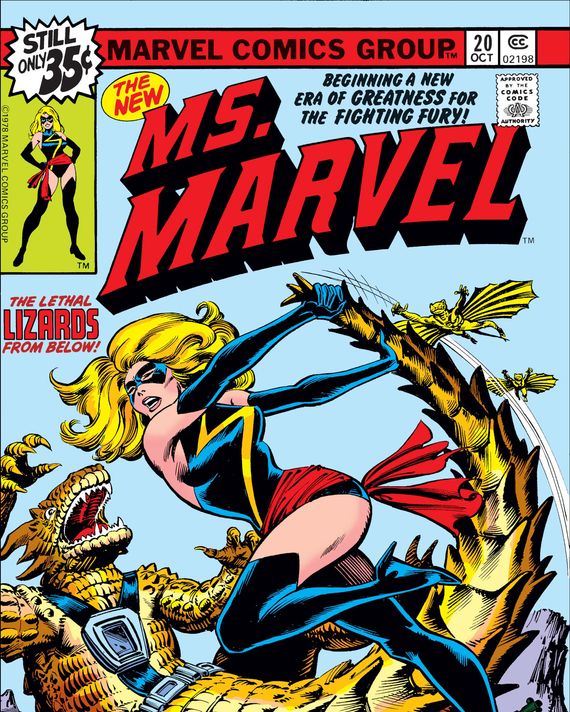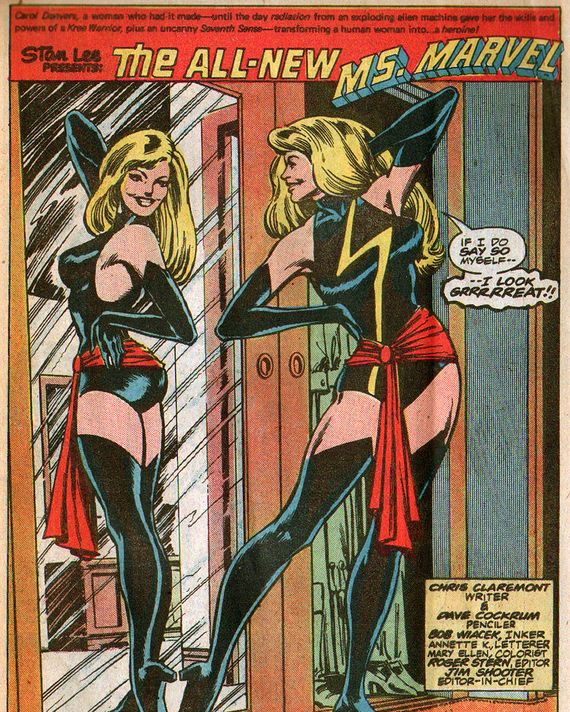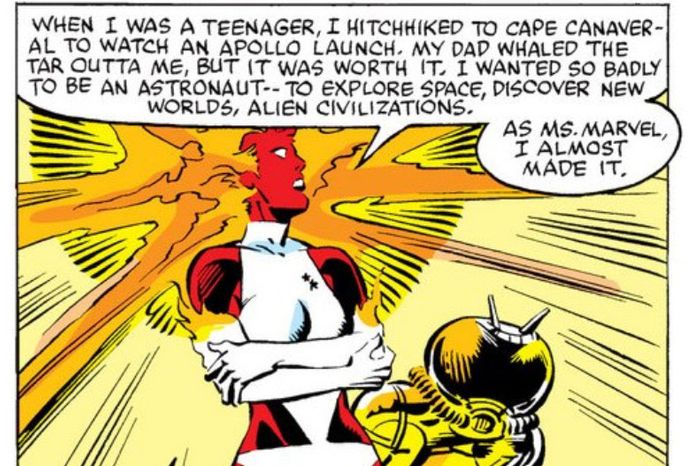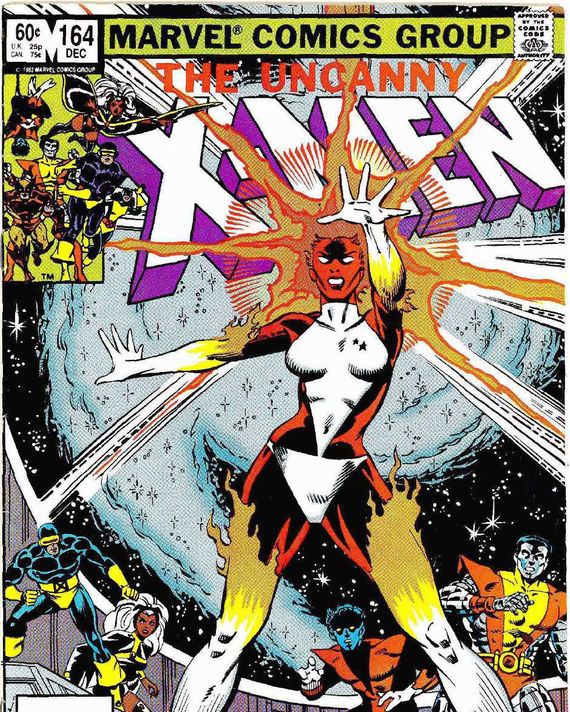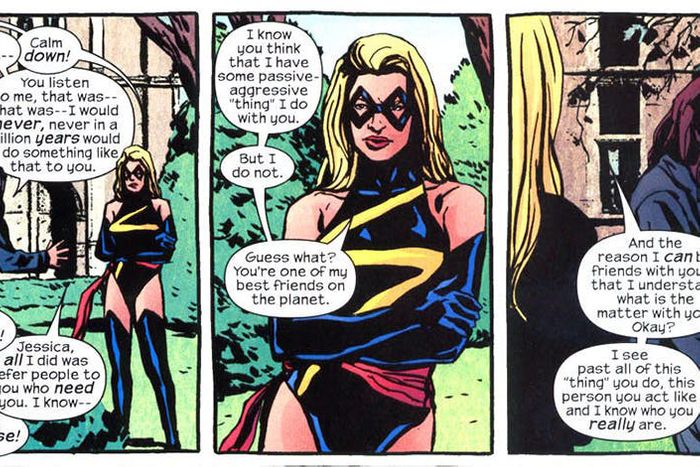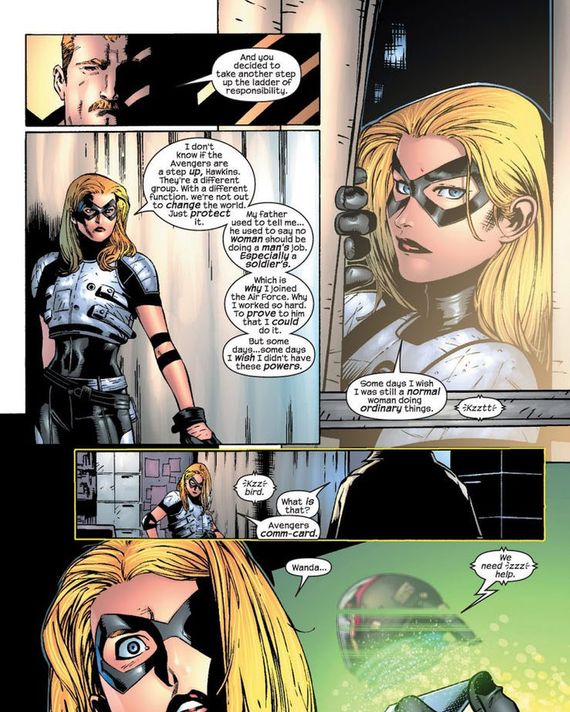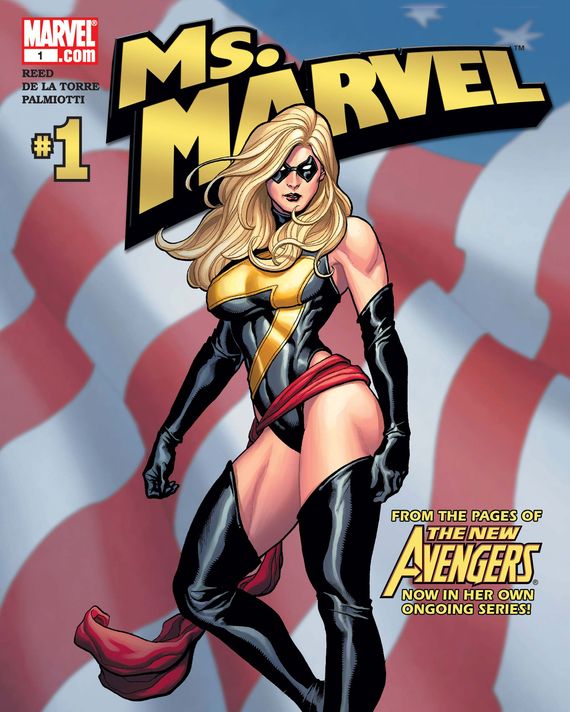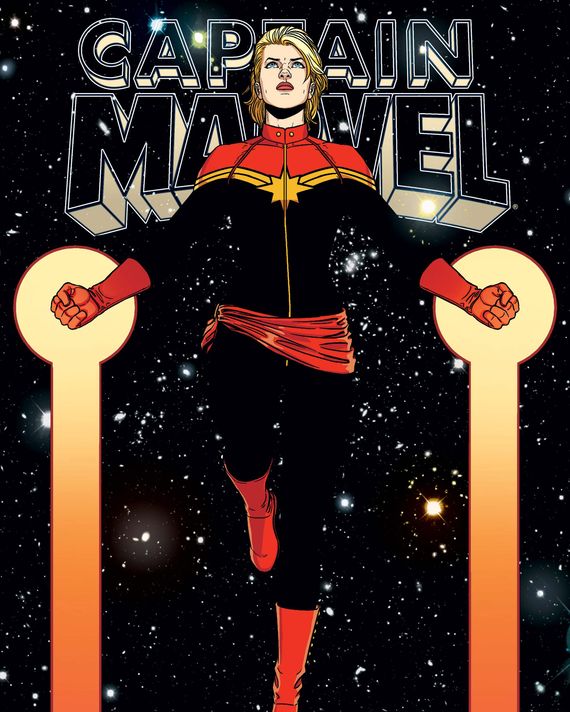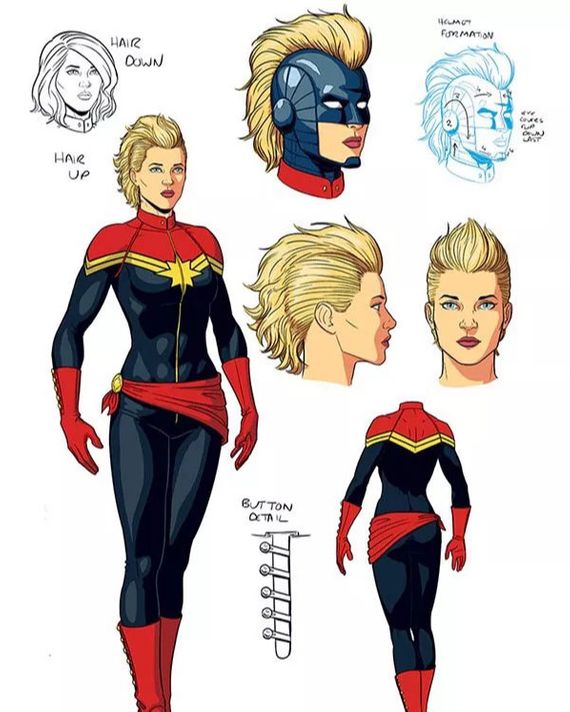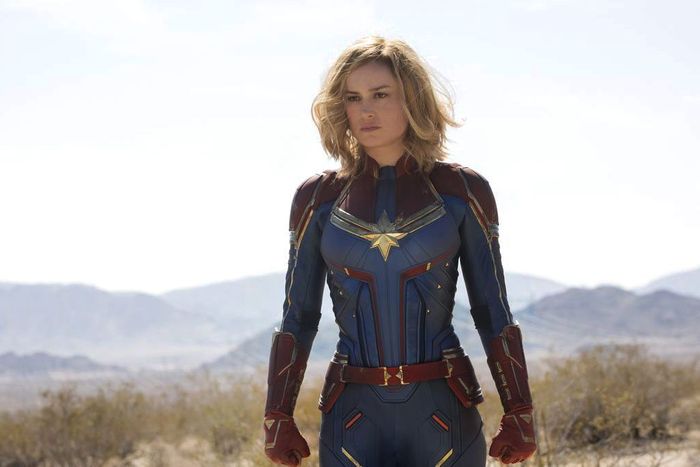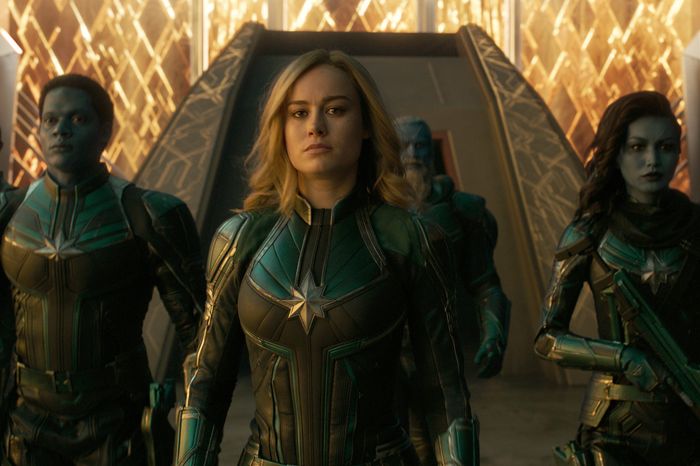
Carol Danvers’s onscreen apotheosis in this month’s Captain Marvel is no less marvelous than it is miraculous, considering the revamps, reboots, and exploitation the comic-book character she’s based on has had to face over the last 51 years. Introduced in 1968 as a romantic interest for the original (male) Captain Marvel, Carol would start her superhero career as a bikini-clad Ms., the product of (male-driven) editorial mishegoss that reflected the general perception of American women at the time. Before she could end up in theaters as one of Marvel’s mightiest, she’d endure decades of spotty, incremental progress toward empowered superstardom that made itself most readily apparent in the form of Carol’s constantly changing uniforms.
On the occasion of actress Brie Larson’s turn as Captain Marvel’s title character on March 8, we’re running down the superhero’s uncanny climb through a fictional multiverse designed for, and by, men. Behold, a history of Carol’s evolution from girlfriend to blockbuster lead, told through costumes:
1968: Captain Marvel’s Girlfriend
In her debut, Marvel cast Carol Danvers as little more than a bottle blonde “girl” of the atomic age. She arrives in Marvel Super-heroes No. 13 as a romantic interest — no leotard in sight — for the original Captain Marvel, the alien supersoldier Mar-Vell, who was living on Earth under the human alias Dr. Walter Lawson in an effort to determine whether or not the planet posed a threat to his Kree people. Carol is introduced as a brassy, trousers-wearing chief of security for a missile base — likely a derivative of DC Comics’ Carol Ferris, head of Ferris Air and the prime romantic interest of the Green Lantern. Though Carol and Walter’s love story didn’t have quite the same staying power, and the series was canceled in 1970, her military background and connection to the cosmic hero would be pivotal to her own superhero origin.
1977: The All-New Ms. Marvel
During the heavy-handed, politically oversaturated late ’70s and early ’80s, Marvel introduced several female derivatives of its male stars, many of whom beat the odds and endured over the decades: She-Hulk, Spider-Woman and, of course, Ms. Marvel. Rocketing into her titular series in 1977, Carol took on a role similar to the one previously inhabited by Mar-Vell, appearing in a near-identical look to her originator, inconveniently redesigned into a bikini cut, with a scarf in place of a cape and a Farrah Fawcett blowout that would only gain more volume with flight. Beyond her second-hand getup, Ms. Marvel’s powers were literally grafted from her male predecessor’s, when the two were exposed to radiation from a detonating “psyche-magnetron” device and his DNA merged with hers.
1977: Career-Woman
In her civilian identity, Carol made the clunky career transition from the military to working as the editor of a women’s magazine — a second nod to Gloria Steinem beyond the character’s Ms. moniker. The creative team of Chris Claremont, Dave Cockrum, and Louise Simonson (known for making the X-men into Marvel’s flagship property) battled the miniskirt mode of the era, dressing Carol in a fashionable and workplace-appropriate wardrobe. But despite the redux, Carol Danvers still felt like a knockoff of Lois Lane, with Superman’s powers. Part of the conceit of the new series was that Ms. Marvel would lose her memories of crime-fighting as soon as she powered down, meaning Carol literally didn’t know who she was.
1978: Black Spandex
Carol broke away from the Mar-Vell leotard in issue No. 20, sporting instead a black one-piece, matching thigh-high heels, gloves, and a mask that would come to define the character for the next 30 years. Fashioning a sash out of her previous red scarf, artist Dave Cockrum placed Ms. Marvel in line with one of his most beloved makeovers — the X-men’s timid Marvel Girl transformation to the scorching, Studio 54–chic Phoenix. Despite the improbable nature of the getup, Carol’s connection to Mar-Vell was now rendered moot; Ms. Marvel was her own superhero, with full access to her superpowered and civilian identities, an expanded rogues’ gallery (including the mutant terrorist Mystique) and, finally, a look of her own. Unbound by her legacy, she could slowly forge a new path.
1982: Disco Rebirth
Just as progress seemed inevitable, Carol suffered a setback. Like many women (both in real life and in comic books) at the vanguard of ’70s women’s liberation, Ms. Marvel faced backlash during the Reagan era. The all-male creative team of early-’80s Avengers stories put the character through a bizarre gauntlet of abuse — involving mind control, rape, and a grueling inter-dimensional pregnancy. After departing the team, Carol soon took another hit when the future X-man Rogue drained her of her abilities. She sought sanctuary with the X-men, defeated, de-powered, and without her cosmic spark.
In 1982, however, she got her chance to burn away the past in the pages of Uncanny X-Men. When the Brood, an insectoid alien race, took the X-men captive as potential hosts for their spawn, their experiments on Carol rebooted her Kree DNA. The formerly helpless hero was reborn as a cosmic avenger with an Afro of solar fire, white disco thigh-highs and a new identity: Binary. As Binary, Carol Danvers could explore the galaxy like she’d always dreamed of, flying out of the clutches of white female stereotypes. (Note: Around this time, Monica Rambeau’s second Captain Marvel character became one of Marvel’s first black female superheroes. In 2019’s Captain Marvel film, Monica, along with her mother Maria Rambeau, make an exciting and curious debut.)
1990s Through Early 2000s: Warbird
Again, the new freedom wouldn’t last. Carol came back from space in the early ’90s, with the new militant moniker Warbird and the old Earthly form. She was back in the black spandex, and back with the Avengers; it was if nothing uncanny had ever happened. Writer Kurt Busiek gave the character a chance to struggle with her comedown from the cosmos in a story line involving alcoholism. She’d turn up as Jessica Jones’s passive-aggressive best frenemy, and help fight some alien invasions, but like Ms. Marvel, Warbird seemed not to know who she was.
2003: U.S. Avenger
Marvel’s post-9/11 landscape saw superheroes becoming fascists in books like Civil War. In 2003, Carol turned up in a Jack Bauer–era slate-armored uniform before announcing her departure to work for the Department of Homeland Security. Under President George Bush. What were we doing to our superheroes?
2006: Ms. Marvel Once More
The grim “Who can you trust?” Marvel years stretched well into Bush’s second term. Captain America and Aunt May were both gunned down … in the same year. Comics were bleak. But Carol Danvers had an opening for a bright comeback in a world craving straightforward superheroics. In 2006, she took to the skies once more as Ms. Marvel, and fared pretty well, leading an Avengers team and commanding her own decent series. But the Cockrum-designed costume had aged poorly, especially as the “cheesecake” artists of the era stretched the character’s anatomy far beyond pinup proportions. For Carol Danvers to stay relevant in an expanding readership of women and young girls, she’d have to change fast. And change she did.
2012: Captain Marvel Finally Lands
The aha moment in the character’s career. Writer Kelly Sue DeConnick reimagined Carol as a “lady Chuck Yeager” in her pitch for a new Captain Marvel series. She recruited artist Jamie McKelvie to design a look of slick, concise utility — with the classic sash for a bit of panache. No thigh-highs, no eye mask, no cleavage. It was instantly beloved, made into fan-art iconography before the first issue even hit stands. McKelvie had given a new generation of fans what they wanted: a desexualized, androgynous armor that would prove invulnerable to the coming decade of fanboys turned trolls. With a fuck-you mohawk and clenched fists, the upgraded Danvers was a mesmerizing bounty to women on Tumblr, at conventions, and far beyond the musty comic-book shop. The new Captain Marvel was not just futuristic, but prescient.
2019: The Big Screen Debut
Once McKelvie’s design dropped, it only took a reported eight months for a Captain Marvel script to materialize at Marvel Studios. The flight suit likely won Brie Larson over to the role — in 2019, no actress, Oscar winner or not, wants to return to the era of undeniable objectification. Larson reportedly trained up to four hours daily for the role, deadlifting 225 pounds and pushing her trainer’s Jeep up a hill. In a red, blue, and gold uniform that nods heavily (and possibly profitably) to her origins in the U.S. Air Force, Larson looks like she can go 100 rounds without backing down. Like her 1978 incarnation, the fully realized Carol Danvers would battle a loss of memory and identity. But at least this time, she could do it with agency — and style.


